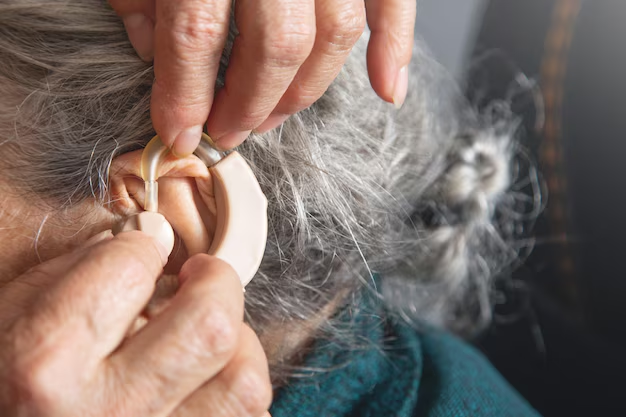Changing Hearing Aid Filters: Everything You Need to Know
For millions of people relying on hearing aids, maintaining these devices is essential to ensure clear sound quality and optimal performance. One critical component of a hearing aid that requires regular attention is the filter. Filters play a crucial role in keeping your hearing aids functioning properly by preventing debris and earwax from entering the microphone and speaker. In this article, we’ll delve into the necessity of changing hearing aid filters, how often this task should be performed, and practical tips to keep your hearing aids in ideal working condition. Let’s unlock the secrets to keeping your hearing aids at their best!
🦻 Why Are Hearing Aid Filters Important?
Filters act as the first line of defense against dust, moisture, and earwax that can damage hearing aids. These small, often overlooked components are pivotal in maintaining sound clarity. Without functional filters, these contaminants can enter the hearing aid, leading to muffled sound or complete device failure.
- Sound Quality: Filters ensure sound clarity by blocking particles that may clog and distort audio.
- Device Longevity: Regularly maintaining filters can extend the lifespan of your hearing aid.
- User Comfort: Clean filters help in reducing sounds like feedback or whistling, offering a more comfortable experience.
🔄 Signs You Need to Change Your Hearing Aid Filters
Understanding and recognizing when to change the filters is crucial. Here are some common indicators:
- Reduced Sound Quality: If sounds start to seem unclear or distorted, it may be due to a clogged filter.
- Feedback Issues: Experiencing whistling or feedback more frequently can be a sign of a compromised filter.
- Visual Check: If the filter appears dirty or clogged upon inspection, it’s likely time for a change.
- Usage Patterns: Heavy users or those in dusty, humid environments may need more frequent changes.
📅 How Often Should You Change Your Hearing Aid Filters?
The frequency of changing hearing aid filters varies based on usage, environment, and the type of hearing aid. Here’s a general guideline:
- Regular Users: Every 1 to 2 months.
- High Moisture/Dust Environments: Every 2 to 4 weeks.
- Lower Usage or Cleaner Environments: Every 2 to 3 months.
Keep in mind that individual experiences will differ. Regularly assessing your hearing aid’s performance and consulting with a hearing care professional can help determine the best interval for you.
🧰 How to Change Your Hearing Aid Filters
Changing hearing aid filters is a straightforward process, generally achievable at home. Here’s a step-by-step guide:
Tools You May Need
- Filter replacement kit (available from the hearing aid manufacturer)
- Cleaning brush or soft cloth for debris removal
Step-by-Step Process
- Prepare the Hearing Aid: Turn off and remove any components like domes or earmolds if applicable.
- Remove the Old Filter: Use the provided tool to gently remove the clogged filter, being cautious not to damage other parts of the hearing aid.
- Clean the Area: Gently clean the filter area with a brush or cloth to remove any debris.
- Insert the New Filter: With the insertion tool from your kit, place the new filter securely in place.
- Reassemble the Hearing Aid: Reattach any parts removed earlier and turn on the device to test sound clarity.
🧐 FAQs Relating to Hearing Aid Filters
What if I Delay Changing the Filter?
Delaying filter changes can lead to poor sound quality and might eventually damage your hearing aid, resulting in costly repairs. Regular maintenance is a proactive way to prevent these issues.
Are All Filters the Same?
No, filters vary depending on the maker and model of the hearing aid. Always use the recommended filters for your specific device to ensure compatibility and effectiveness.
What Happens If My Filter Is Stuck?
If a filter becomes stuck, refrain from using force to remove it, as you may damage the device. Seek assistance from a professional to safely remove and replace the filter.
🔧 Maintenance Tips for Hearing Aid Longevity
Caring for your hearing aids beyond just filters involves a few straightforward practices:
- Regular Cleaning: Use a soft, dry cloth to gently clean the exterior daily.
- Avoid Moisture: Keep hearing aids away from water and consider using a dehumidifier designed for hearing aids.
- Battery Care: Change batteries as directed and remove them when not in use for extended periods.
- Check for Earwax: Regularly clean earmolds or domes to prevent buildup that can affect sound quality.
📝 Key Takeaways
Let’s summarize some of the crucial points regarding changing hearing aid filters:
- 🕒 Frequency Matters: Change filters every 1 to 2 months for regular use.
- 🔍 Recognize Signs: Reduced sound quality and increased feedback are common indicators.
- 🛠️ DIY Friendly: Most filter replacements can be done at home with the right tools.
- 🔧 Regular Maintenance: Keeps your hearing aids functioning perfectly and extends their life.
By integrating these practices into your routine, you can ensure your hearing aids remain reliable companions, offering the clarity and effectiveness you need.
In the world of hearing assistance, understanding the nuances of device care, particularly something as seemingly minor as changing filters, can make a significant impact. By committing to regular maintenance and staying informed, you can enjoy superior sound quality and prolong the functionality of your hearing aids for years to come. Whether you’re a seasoned user or new to hearing aids, these insights should empower you to keep your devices in optimal condition, ready to support your hearing needs.

Related Topics
- a Plus Hearing Aid Centers
- a Real Pain Showtimes Near Centerville
- Are Airpods Bad For Your Ears
- Are Apple Second Generation Airpods Hearing Aids
- Are Audien Hearing Aids Just Amplifiers
- Are Costco Hearing Aids As Good As Others
- Are Costco Hearing Aids Good
- Are Hearing Aid Domes Interchangeable
- Are Hearing Aid Subscriptions Worth It
- Are Hearing Aid Tax Deductible